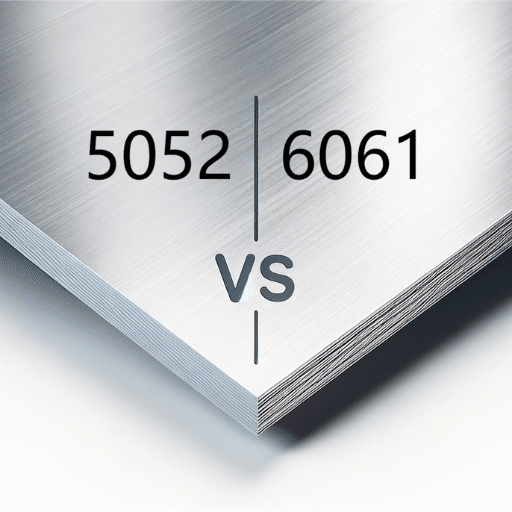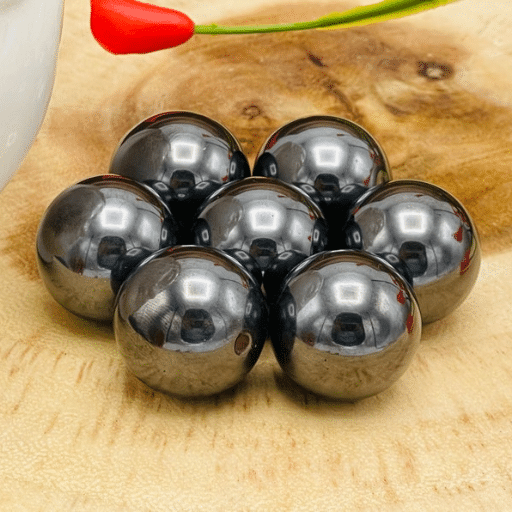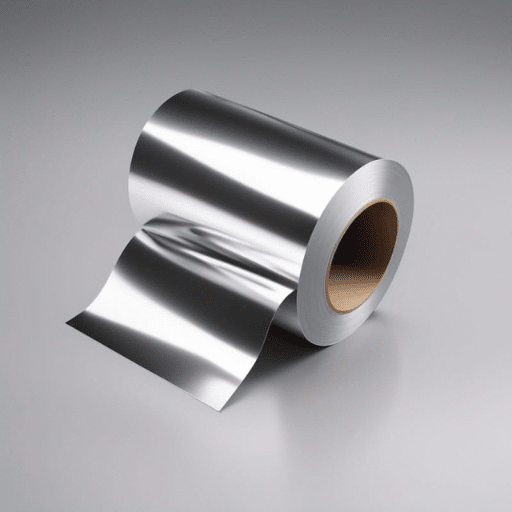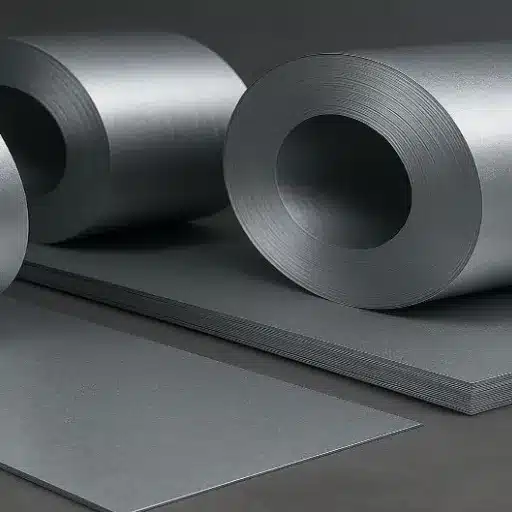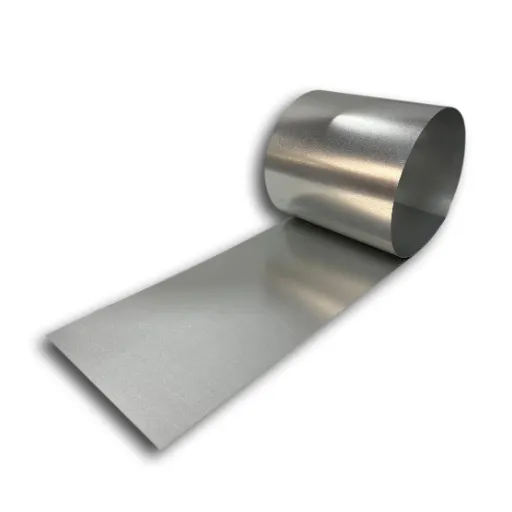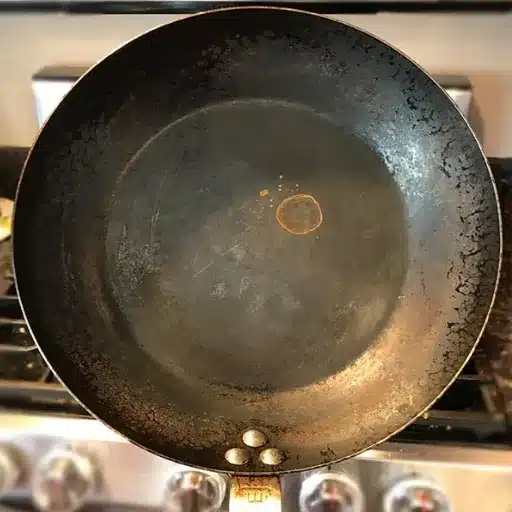When developing complex and reliable systems in an industry, having prior knowledge about the functions performed by various fittings is important. These parts not only perform the task of joining pipelines but also ensure the correct and safe transfer of liquids, gases, and other materials in numerous industries. From the chemical, oil, gas, construction, and manufacturing industries, pipeline fittings can alter the cost efficiency, durability, and performance of any given task. This is a thorough guide that seeks to discuss industrial features like types, materials, and applications of pipelines in industrial settings. It is useful for curious folks and specialists who wish to have a better understanding pertaining to industrial pipelines.
What Are Industrial Fittings and Their Primary Functions?
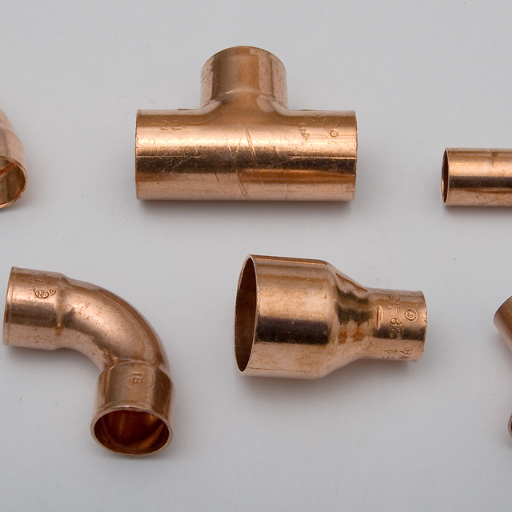
Industrial fittings are critical parts used for joining pipes, tubes, and other pieces of equipment within different systems. Their main objectives involve providing a tight and leak free connection, permitting the smooth advancement of liquids/gases, and allowing system modifications such as changes in direction, size, or flow rate. These fittings are indispensable in manufacturing construction, as well as energy production industries, where robust and long lasting connections are needed to guarantee safety and operational efficiency.
Understanding Industrial Pipe Fittings: Definition and Purpose
Types of Industrial Pipe Fittings
To fulfill the requirements of diverse applications, industrial pipe fittings are available in a broad range of shapes, materials, and sizes. Each type serves a distinct purpose to ensure alignment with system design as well as the medium flowing through the system. Some more commonly utilized industrial pipe fittings are listed below:
- Elbows: Perpendiculars elbow fittings are used to change the direction of flow, typically by 45 or 90 degrees. Crucial in systems where directional changes due to space limits or layout designs are sophisticated.
- Tees: A single tee fitting can connect three separate pipes allowing splitting or combining of flows. Frequently utilized in collection and distribution systems for fluids.
- Couplings: These fittings are meant to join two parts of a pipe. They come as rigid or flexible forms, depending on the requirements of the piping system.
- Reducers: Used whenever pipes of differing diameters need seamless flow and must be adjusted to suit equipment or system needs.
- Flanges: Flanges serve an important purpose of aiding removal and maintenance of pipelines. These are mostly bolted and sealed with gaskets to achieve a strong closure.
- Caps and Plugs: Caps and plugs are used to seal the flow when required by closing the open ends of pipes or fittings.
Common Materials Used in Pipe Fittings
The selection of material for pipe fittings is based not only on the intended use, but also on the pressure, temperature, and chemical resistance of the pipe. Materials of particular importance include:
- Steel (Carbon and Stainless): Widely used in high-pressure and corrosive systems both as durable as well as strong, steel fittings have withstanding capability in extreme conditions.
- Copper: HVAC and plumbing systems benefit from copper’s excellent thermal conductivity as well as its resistance to corrosion.
- Plastic (PVC, CPVC, PEX): Water supply and drainage systems, both residential and commercial, benefit greatly from cheap and lightweight plastic fittings.
- Brass: For applications that are exposed to high temperatures or friction, good corrosion resistance makes brass a common material of choice.
Market Data and Trends
Until 2027, the global industrial pipe fittings sector is anticipated to steadily grow to around $19 billion, fueled by the oil and gas construction & water treatment industries. Innovations in materials manufacture, coupled with a rising emphasis on sustainability, are shaping the competitive landscape. For instance, new developments in corrosion-resistant coatings and high-performance alloys are improving the durability and dependability of modern pipe fittings, resulting in their widespread acceptance in critical applications.
An in-depth understanding of the different categories, materials, and the changing dynamics of market industrial pipe fittings enables industries to achieve the desired system design, efficiency, and reliable operation over time.
Common Types of Fittings Used to Connect Industrial Piping Systems
To ensure the enhanced performance, flexibility, and strength of industrial piping systems, various types of piping fittings are used. Some of the most common uses and functions of the various types of piping fittings are given below:
- Elbows
Elbows are used for changing the direction of flow within a piping system. The two most common ones are 45-degree and 90-degree elbows made from stainless steel or PVC. These fittings are applied in fluid pressure systems that need redirection, such as oil refineries or HVAC systems.
- Tees
For splitting or combining flows from multiple lines, Tee fittings, which are shaped like a “T”, are used. These fittings are extremely useful for complex systems where collection or distribution of depends such as chemical processing plants or water treatment facilities.
- Reducers
Reducers serve the function of connecting pipes of different diameter sizes while ensuring system integrity and a smooth changeover. Aligned pipes use concentric reducers while eccentric ones are used to offset pipes to prevent air from building up in the lines.
- Couplings
These fittings secure the connection between two pipes together. Rigid or flexible, couplings are made of cast iron, brass or stainless steel depending on its application. Particularly useful in systems that undergo temperature changes or vibrations are flexible couplings.
- Flanges
By creating bolted connections, flanges make piping systems easier to assemble and disassemble. They are commonly used in pipelines requiring maintenance intervals such as in chemical processing or power plants. Leakage at joints is prevented through gaskets which improve the sealing capability of flanges.
- Unions
Unions can be draws as similar to couplings, both are meant for connecting pipes, however unions have the advantage of making disconnection much more simpler, if the pipes need to be removed. For this reason, they are well favored for systems that require disassembly frequently for maintenance purposes or where components need to be changes.
- Caps and Plugs
Caps and plugs serves the purpose of closing up the accesses on the piping system either temporarily or permanently. As part of these fittings, caps are placed on top while plugs are inserted into openings. These fittings are very important for purposes of the system tightness tests, repairs, and future extensions of the system.
- Valves
Valves are a form of crucial fittings which are used in controlling as well as regulating the fluid flow. Different kinds of valves include gate valves, ball valves, and globe valves which all serve specific operational functions. For instance, in emergencies, ball valves valve tend to be very useful because they shut off the flow of liquid very fast.
In the development and maintenance of any industrial piping system, these fittings are crucial. Picking the proper type of fitting guarantees congruence with system specifications, operational effectiveness, and safety, thereby enhancing infrastructure durability.
How Industrial Fittings Facilitate Fluid and Gas Transportation
As with every other component within a pipeline, industrial fittings also serve a very important purpose as they aid in the unimpeded flow of fluids and gases through the pipeline. Each one of these components has a specific purpose, such as withstanding certain values of pressure, temperature, and flow speed, which is the reason why they are important in oil and gas, chemical processing, and even water treatment industries. Like every other fitting, stainless steel fittings also have their advantage, such as withstanding corrosion. This becomes very important if the environment is full of chemicals or saline water. In less demanding applications, plastic fittings such as PVC or CPVC become very popular due to not just their lightweight but also their cost-effective materials.
With the aid of precision-engineered fittings, it has now become easier to decrease energy losses during the transportation of fluids such as oil by almost 15%. This strongly enhances the overall efficiency of the process. On top of that, advancements in technologies now enable the fittings to have leak detection as well as self-sealing mechanisms, which greatly help in the safety of the operation and the overall maintenance cost. There is a lot to gain by focusing on the most suitable fitting that is needed based on the condition of operations, considering the most critical aspects of performance as well as durability.
What Are the Different Types of Industrial Pipe Fittings?
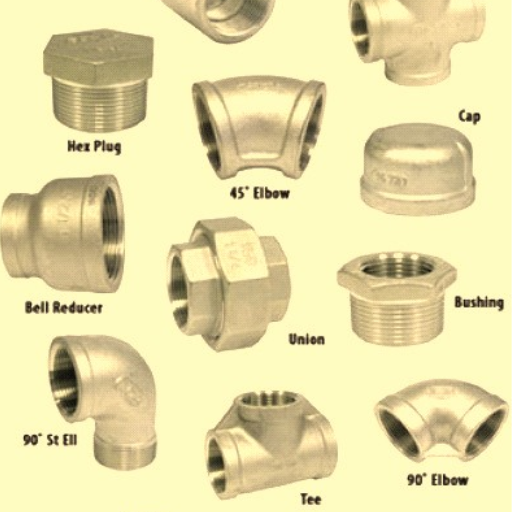
Just like any other product, industrial pipe fittings have their very own categories based on how they’re structured and what kind of purpose they serve. The most frequent types of industrial pipe fittings are:
- Elbows – Used to change the flow direction at a turn, usually at 45 or 90 degrees.
- Tees -Allow for flow to be divided or merged in three different directions.
- Reducers – Allow for pipes with varying widths to be connected.
- Couplings – Used to securely join two pipes together.
- Unions – Removable joints that permit fast assembly or disassembly.
- Caps and Plugs – Close the ends of pipes in order to stop the flow or for future extensions.
- Flanges – Offer robust connections that can be used in systems that require frequent assembly or disassembly.
Each category of fitting contributes to effective and safe fluid or gas movement within industrial systems. Their selection is made based on the system’s pressure and temperature, as well as the fluid involved.
Elbows, Tees, and Reducers: Basic Pipe Connectors Explained
In pipeline systems, elbows, tees, and reducers are critical components that change the direction of flow, control the distribution, or change the size of flow.
Rather than Elbows, use Tees to Split or combine the flow. You typically use them to change directions between two Pipe. Well-done Splitters will maintain Equal division, however, Reduce Splitters will connect Pipe B with a smaller diameter. These fittings are frequently installed in water-supplying piping systems and in chemical-processing pipelines for work-flow efficiency.
Joint prevents pressure loss while connecting pipes with differing diameters. Pump systems use Eccentric reducers to avoid fluid going backwards when it’s not wanted. Aligning pipes vertically makes it easy to use Concentric Reducers. For example, lowering the diameter of the outflow pipe also lowers the pressure; ideal shaping prevents cavitation, achieving the goal without much loss elsewhere.
Then ensure the easiest shifts within industrial oil process pipelines by providing seamless flow on lower process units powered by core 90-degree elbows. Ensure precision pipe alignment in Conveyor systems and construction plumbing with these fittings constructed out of durable Carbon Steel, Stainless Steel, and Plastic (PVC)
It’s important to pay attention to aspects like flow velocity, system pressure, material compatibility, and even resistance to corrosion while choosing these connectors. Their correct usage not only eliminates flow barriers but also prolongs the life of the entire pipeline systems; thus, making elbows, tees and reducers priceless in many industries.
Flanges, Couplings, and Unions: Connection and Joining Fittings
Unions, couplings, and flanges are major parts that connect pipes, valves, pumps, and other equipment in piping systems. These fittings guarantee that there are no leaks and that a secure connection is made, protecting the integrity and safety of industrial operations.
Flanges have wide application across the oil and gas sector, chemical processing industry, and water treatment facilities. They permit quick mounting and dismounting along pipe segments, enabling inspection, cleaning, and maintenance. They are generally made from carbon steel, stainless steel, or alloy steel, depending on the application. They come in different types like weld neck flanges, slip-on flanges, and blind flanges. Stainless steel flanges, for example, are preferred in corrosive environments owing to their superior resistance.
Couplings perform the vital functionality of joining two pipeline sections. Designs vary by operational need, with rigid and flexible couplings available. Flexible coupling is used in systems with vibration absorption, or alignment adjustment due to its ability to prevent mechanical strain on the connected components.
Unlike the previous method, unions enable the disconnection and reconnection of pipes without rotating the entire segment of the pipe. A union is made up of three main parts: a nut, a female end, and a male end, all of which maintain a solid, leakproof seal, restraining the nut from rotating; this feature is beneficial in systems that require frequent maintenance or confined spaces.
Data illustrates that these fittings help increase the reliability of the pipelines. As an example, flange connections are tested to endure forcing several thousand psi of pressure, depending on their pressure class and material. In addition, the advancements in material science make flanges, couplings, and unions stand up to the test by improving their durability and performance, ensuring that modern industries’ needs are met. Their adaptability and effectiveness guarantee optimal performance of piping systems.
Threaded Fittings vs. Welded Fittings: Pros and Cons
For small piping systems, easy threaded fittings are quick to install. They are economical and efficient, and allow easy maintenance, however, they cannot hold up under high pressure, and if not sealed correctly, can be prone to leaks. Welded fittings possess the opposite capabilities. While they require skilled labor with expensive equipment, they do allow for a long-term solution when under high temperatures, creating a strong and leak-proof connection. When deciding whether to use threaded or welded fittings comes down to ease of maintenance, cost, and pressure.
How Do Materials Impact Industrial Fitting Performance?
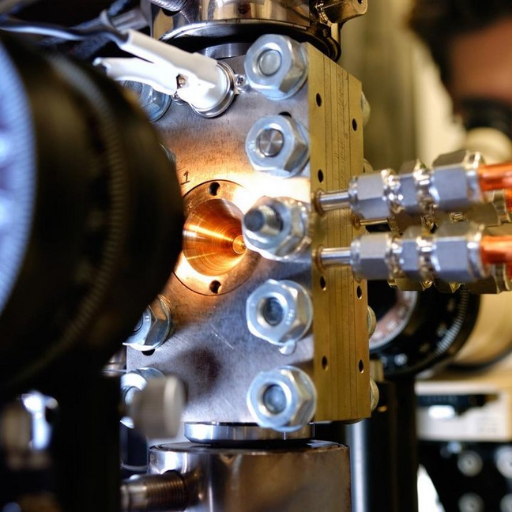
Various materials have a notable impact on industrial fittings’ performance and strength, age, and exposure to various environmental factors. For example, Stainless steel has a strong strength and excellent corrosion resistance, making it ideal to be used in cold or high-pressure settings. Wear-resistant brass is often used in low to moderately pressurized environments because of its good conductivity. Plastic fittings are lightweight and chemically non-corrosive, and are mostly preferred for systems that handle mild chemicals or where cost advantages are needed. Choosing the right material makes sure that the fittings survive the specified applied conditions, thus improving the reliability and life span of the system.
Stainless Steel Pipe Fittings: Benefits and Applications
Benefits of Stainless Steel Pipe Fittings
Stainless steel pipe fittings are invaluable for different industries because of their strength, flexibility, and efficiency. The following is a list of the benefits:
- Corrosion Resistance: Stainless steel has great resistance to rust and chemical corrosion which makes it perfect for use in damp, wet, or harshly chemical environments.
- Strength and Durability: Stainless steel has superior structural strength and can withstand great pressures and temperatures. This ensures it has a long service life even under extremely challenging conditions.
- Hygienic Properties: Due to the non-porous surface of the material, it resists bacteria making it suitable for use in food processing, pharmaceuticals, and beverage industries.
- Aesthetic Appeal: Stainless steel looks polished and modern, which makes it a great candidate for decorative purposes and visible installations.
- Recyclable and Sustainable: Stainless steel is 100% recyclable which makes it environmentally-friendly, thus positively impacting sustainable practices in construction and manufacturing.
- Wide Compatibility: These fittings can be used with various piping materials and systems, which adds flexibility to the design and installation processes.
Applications of Stainless Steel Pipe Fittings
Because of their wide range of versatility, stainless steel pipe fittings are used in a wide array of different industries. A few notable applications are:
- Oil and Gas Industry
-
-
- Used for the construction of pipelines, refineries, and offshore drilling platforms because they can withstand high temperatures and corrosive environments.
-
- Chemical Processing Plants
-
-
- Ideal for handling volatile chemicals, where strength and resistance to corrosion are critical.
-
- Food and Beverage Industry
-
-
-
Widely used in sanitary piping systems for their ability to maintain proper hygiene and regulatory standards.
-
-
- Pharmaceutical and Biotech
-
-
- Crucial in clean applications involving delicate materials.
-
- Water Treatment Systems
-
-
- Employed in the piping for the transportation of water and sewage as an enduring, anti-corrosive solution.
-
- Construction and Architecture
-
-
- Famous for exposed pipework or architectural features because of the beauty, strength, and protection they offer.
-
- Automotive and Aerospace Industries
-
-
-
Used in the spending of living hinges, exhaust tubing, hydraulic lines, and straining applications requiring high strength.
-
-
The advantages and multifunctional uses of stainless steel pipe fittings makes them a go-to solution in many industries while also providing unparalleled dependability and durability in both normal and extreme environments.
Choosing the Right Material for Corrosion Resistance in Industrial Applications
While picking an alloy for its non-corrosive nature in an industry, factors like the nature of corrosive action, temperature, pressure, and even mechanical wear and tear come into play. Following is the list of ratio metals and their common characteristics:
- Stainless Steel
Stainless steel is often preferred by industries because of its excellent resistance to corrosion, particularly oxidizing agents. Alloys like 304 and 316 stainless steel are particularly noteworthy, 316 having greater resistance to chloride pitting and crevice corrosion. Recent industry information suggests that 316 stainless steel is widely used in marine areas and in chemical processing industries where saltwater and aggressive chemicals are prevalent.
- Titanium
Titanium is highly resistant to corrosion, especially in environments with chlorine, seawater, or acidic solutions. It is also very strong for its weight, making it ideal for use in the aerospace industry, chemicals, and marine. Research suggests titanium is exceptional at dealing with harsh organic and inorganic compounds.
- Nickel Alloys
Nickel alloys like Hastelloy and Monel are very successful in strongly acidic, alkaline, and high-temperature environments. Some nickel alloys are resistant to both oxidizing and reducing environments, making them useful in chemical processing where several corrosive conditions are present.
- Copper Alloys
Bronze and brass, alongside copper, exhibit remarkable resistance to corrosion in both fresh water and air. Such materials are common in plumbing, heat exchangers, and marine industries. Studies emphasize their potential in biofouling mitigation, effectively increasing the operational lifespan of equipment.
- Non-Metallic Options (Plastics and Composites)
The corrosive chemicals are best managed using PVC, CPVC, and fiberglass-reinforced plastics (FRP) at low to moderate temperatures. The non-metallic substances are inexpensive and lightweight. The recent advancements made to these materials have significantly improved their strength and resistance to heat.
Factors Influencing Material Selection
Choosing corrosion-resistant materials requires the following to be adhered to for optimal performance:
- Chemical Compatibility: This is where the selected material needs to adequately ‘respond’ to the chemicals it will be exposed to.
- Operating Temperature and Pressure: The conditions and operating temperature and pressure need to be gaps to assess structural integrity and the longevity of the material.
- Cost-Effectiveness: The applicable material must fulfill benchmark standards for the sector.
- Safety Standards and Regulatory Compliance: The expected lifecycle expenses, such as maintenance and replacement components for the infrastructure, need to be rated.
Analyzing these factors helps choose the right materials that optimally improve operational efficiency, lower scaled maintenance expenses, while prolonging the life of irreplaceable industrial infrastructure.
What Are Specialized Industrial Fittings for Different Systems?
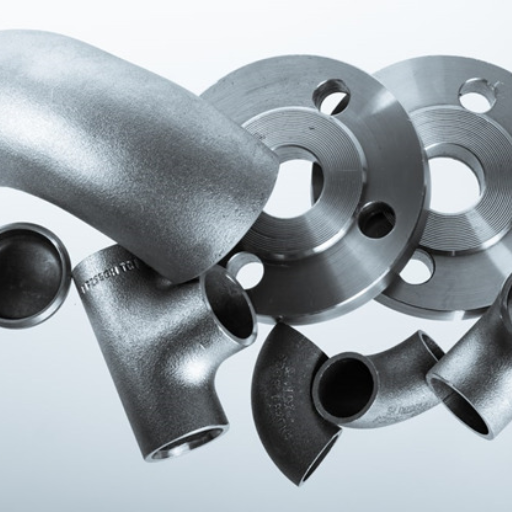
Custom industrial fittings, as the name suggests, are tailored to link, manage, or control the movement of liquids, gases, or even solids within a given system. Due to specific demands, these fittings include:
- Sensitive to clean space maintenance, safety, and technology within the cleanroom field, hydraulic systems, and compressible gas systems, Safety Cleanroom Technology provides customized solutions. These are a few examples of their distinct offerings.
- Hose Adapters Adapting hose connections in hydraulic systems using adjustable hose classmates and single action working methods are commonly employed.
- Break and Start Connectors.. These features are attributed to independent inline control, enabling separation from interconnected lines to allow flow control. Movement and connection within adjusting the elbow joints create level rotation flexibilities.
-
Nipple Fitting Used for joining elbow joints for easy adaptable head pre-rotation function simplicity associated functions utilizing blood pressure periodically rotated.
Picking the correct fitting is based on the particular requirements of the system, its operating pressures, and the transfer materials being utilized.
Hydraulic Fittings and Their Unique Properties
Veteran fitting specialists spend countless hours perfecting hydraulic fittings as they undergo complex designs to ensure that the hoses, pipes, or tubes all incorporate into one seamless structure for fluid power systems. They fit within specific ranges so that the boundaries in temperature and pressure are adhered to while undergoing robust corrosion. Special features described earlier will be able to withstand exceedingly high pressure values that go above 3000 PSI and can range to 10,000 PSI in altered systems.
These three types are the most noted and mostly called compression, crimp, and flange fittings. Due to their simplistic nature, compression fittings show up in low and medium-pressure systems the most. Crimp fittings are more reliable, and if you are working with higher-pressure setups, crimp fittings are the standard. Easy maintenance makes flange fittings superb for vibration-resistant large-diameter functions.
Carbon steel, stainless steel, and brass are the materials these fittings are constructed from which fulfill the specific refined needs that are presented based on the nature of the surrounding environments and the work they need to do. For strong environments, these stainless steel fittings are a must because of their resistance towards corrosion, which is why the chemical processing section needs them. In changeable environmental situations, enhanced surface treatments are carried out to improve their site endurance in a harsh and chemically changeable world, like withered zinc plating.
In addition to considering the system pressure ratings and temperature ranges, professionals also think about the fluid type when selecting hydraulic fittings. It is very important that the material of the fitting is compatible with the hydraulic fluid used, so that wear and tear does not occur, leakage does not take place, and the system’s safety and efficiency is maintained. From construction equipment and industrial machines to aerospace and marine activities, these fittings are crucial in numerous applications, which makes them versatile and essential in contemporary fluid power technology.
Pneumatic and Industrial Valve Components
The design and functioning of pneumatic and industrial valve components have considerably improved due to the requirements of modern industries. These components are vital in controlling the flow, pressure, and direction of air or fluids in industrial systems. Among the latest innovations, proportional control valves now offer precise regulation, enhancing efficiency and response time in automated systems. Moreover, smart valves containing sensors and IoT integration permit remote monitoring while enabling predictive maintenance, lowering downtime, and improving operational efficiency.
Stainless steel and high-performance polymers are increasingly under engineering scrutiny due to pneumatic solenoid valves crafted from stainless steel, which withstand pressures greater than 10 bar and temperatures from -40°F to over 250°F. Such industrial requirements are tough to meet, but the modular valve system has made it easier to handle extreme temperatures, high-pressure environments, and corrosive substances, along with scalability and easy-to-maintain modules of wide interest for complex applications like chemical processing or automotive manufacturing.
Ensuring pace with industrial progression of perceptive IoT controls underscores the value of predictive maintenance, efficiency, reliability, and the boundless adaptability of modern developments in the reserved world of pneumatic and industrial valve components.
Oil and Gas Industry Specific Connectors and Adapters
The oil and gas industry has particular needs for custom-built connectors and adapters to guarantee safe and effective work in extreme and often dangerous settings. These components are vital in upstream, midstream, and downstream operations because they have to withstand harsh pressures, temperatures, and corrosive materials.
A general type of adapter is the API (American Petroleum Institute) certified which is used in critical upstream drilling activities. Their robust construction ensures connections that are leak proof in high-pressure scenarios which can reach up to 15,000 psi in deep sea operations. In addition to these types, quick-connect couplings are becoming increasingly popular because they save time during pipeline assembly and maintenance while also providing secure seals.
As reported, expenditure on the connectors’ corrosion-resistant stainless steel and titanium materials has increased within the last five years by almost twenty percent due to the desire to prolong operational life and reduce downtime. Further, bespoke designs like swivel joints and high-pressure flanges are increasingly being tailored to meet diverse environments from offshore rigs and refineries.
The incorporation of smart monitoring systems into modern adapters has enabled real-time data capturing on pressure, temperature, and flow. Predictive maintenance and safety are improved with these advancements which align with the increased automation of data-driven industry operations. The evolving oil and gas sector will continue to prioritize and focus on developing novel solutions for reliable connectors and adapters to enhance operational efficiency and safety.
How to Select the Right Industrial Fitting for Your Application?
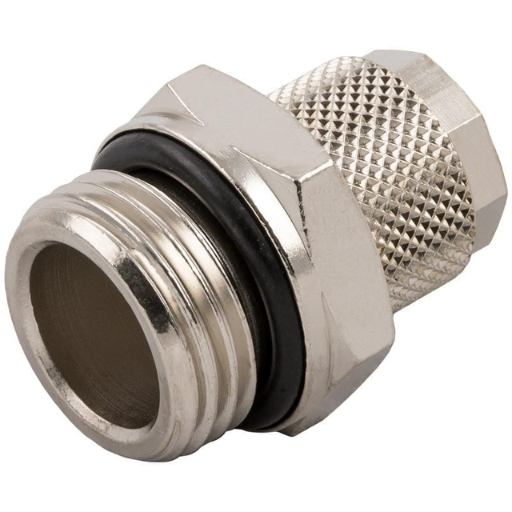
Selecting the appropriate industrial fitting involves taking into account several important considerations.
- Material Compatibility – Always check that the fitting material does not react with the substances it will contact, as this could lead to corrosion or other issues. Examples are stainless steel, brass, and plastic.
- Pressure and Temperature Ratings – Always ensure that the fitting works with the maximum system pressure and temperature ratings.
- Connection Type – Select the fitting type: threaded, push-to-connect, or flanged, as it pertains to the system’s connection design which ensure seals as well as installation.
- Size and Dimensions – Avoid inefficiencies and leaks by measuring to select a fitting that meets the system specifications.
- Industry Standards – Ensure that the relevant industry standards or certifications for compliance are checked for safety and reliability.
Considering these aspects will guarantee maximum efficiency as well as safety in your application.
Key Factors to Consider When Choosing Industrial Fittings
Materials and Coatings
The material composition of industrial fittings is crucial for their durability and performance under given conditions. For example, stainless steel is very corrosion resistant, which makes it suitable for parts that are meant to be in contact with moisture or chemicals. Brass fittings are very thermally conductive and are commonly found in plumbing systems. For more extreme conditions, advanced composites or fittings with protective coatings such as Teflon tend to last longer and reduce wear. Corrosion-resistant coatings are known to increase the lifespan of fittings by roughly 50%, and considering the maintenance costs in industrial setups, this is highly beneficial.
Pressure and Temperature Ratings
An understanding of the fitting’s pressure and temperature range is essential for avoiding system failures. Reinforced materials are used to construct high-pressure fittings, and those are specifically designed to withstand extreme forces; some even exceed 10,000 PSI for specific hydraulic applications. Closely monitored temperature tolerances should also be the same as the system’s environment. For example, -200°F to 500°F PTFE-lined fittings are suitable for cryogenic as well as high-temperature processes. Ensuring that these ratings correspond with your system will allow for enhanced safety and efficiency.
Thread Standards and Compatibility
Most industrial fittings depend on the same thread standards as other components for system integration. The most widely used are NPT (National pipe thread), BSP (British Standard pipe), and metric threads belonging to a particular region and application. Threads that are not properly aligned can result in leakage or failure of system integrity. Modern sealing designs that enhance already existing thread seals reduce the need for sealant application, minimizing the chances of process failure. Checking the specification of the threads in the selection process is vital for the proper installation of the component.
All industrial system requirements are achieved through safety assessments and thorough calculations, which allow for the selection of components that balance performance needs and safety in a wide range of industrial challenges.
NPT and Other Threading Standards in Industrial Piping Systems
In industrial piping systems with NPT and other threading standards, I pay attention to critical aspects of the application such as pressure, temperature, and materials used. For compatibility, I cross-check the thread designations with relevant standards of NPT, BSP, or ISO threads based on the system’s requirements. Through proper attention to detail and selection, I improve the efficacy and safety of the piping system.
316 Stainless Steel and Other Premium Fitting Options
316 stainless steel is considered one of the best for piping and fittings because of its strength, versatility, and sophisticated resistance against corrosion in various settings. Having molybdenum, chromium, and nickel, this alloy is known for its resistance against pitting and crevice corrosion in chloride-rich areas like marine or chemical processing industries.
This material withstands extreme temperatures and has a melting point of 1,370-1,400 degrees Celsius, making it suitable for demanding tasks. In addition to these features, 316 stainless steel has good tensile strength which ensures resilience under immense pressure. Its hygienic attributes makes it an appealing option for food processing and pharmaceutical industries where cleanliness is vital.
Alternatives and Premium Fitting Options
Although 316 stainless steel is quite useful, there are other expensive alternatives that are suitable for particular applications. For instance, Duplex stainless steel is superior when it comes to strength and corrosion resistance, especially in harsh environments. Likewise, Hastelloy and Monel alloys excel in harsh environmental chemical exposure and high-stress industrial conditions. Each material option provides distinct properties that are adapted to particular requirements and ensures a reliable and effective piping system when used with the appropriate fitting design.
What Are Installation Best Practices for Industrial Fittings?
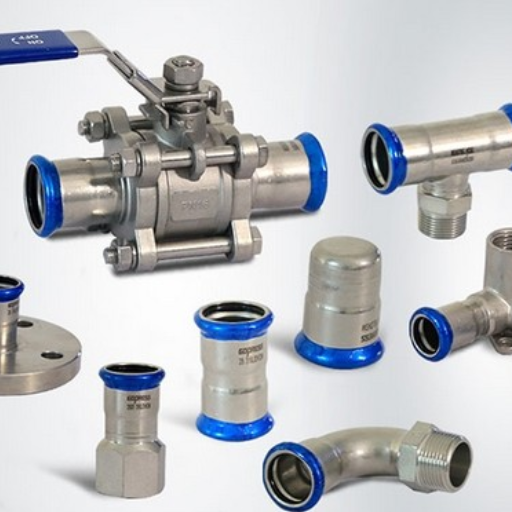
By practicing the following recommendations, reliable performance and long lifespan of industrial fittings are achieved:
- Inspect Components Before Installation – Before use, all fittings and pipes should be checked for any damage, contamination, or defects. Surfaces must be clear of debris and clean.
- Follow Manufacturer Guidelines – Follow the manufacturer’s instructions on torque, alignment, and other assembly processes, as they are crucial to proper functionality.
- Use Proper Tools – Use suitable equipment without over-tightening connections, as this can damage fittings and sealing.
- Ensure Compatibility – Ensure that the materials and thread type of the fittings and the pipe are suitable in order to avoid leaks or a fail in the system.
- Test for Leaks Post-Installation – Ensure that there are no leaks in the system by conducting pressure checks or other forms of leak testing before the system is put into full operation.
- Regular Maintenance – Routine maintenance checks allow for the identification of wear and other issues, therefore, avoiding unscheduled downtime.
Practices such as these will improve system performance and minimize associated operational risks.
Proper Techniques for Installing Threaded and Welded Fittings
For the fitting types below, consider the procedures that are described further: Attention to detail is required when installing welded fittings and threaded fittings to ensure correct installation as per specifications and industry standards.
- Threaded Fittings Installation
-
-
- Selection of Compatible Materials – Ensure the fittings and pipes, e.g., carbon steel and stainless steel, are ergonomically positioned in the context of movement with the operating zone or environment where it will be used and placed in order to prevent corrosion and wear.
- Proper Thread Engagement – Apply a thread sealant (PTFE tape) and seal tightly to avoid possible leaks. Threads should be wrapped in a clockwise manner to ensure better application.
- Avoid Over-Tightening – If excessive torque is applied to a fitting with threads, it can cause deformation to threads and lead to joint failure. Always use the torque wrench when necessary and try remaining within boundaries of suggested values to avoid breaking the material.
- Inspection After Installation – After attaching fittings, always see if there are any observable gaps or misalignments that can compromise the entire system’s integrity.
-
- Welded Fittings Installation
-
-
- Prepare the Surfaces – Clean and bevel the pipe’s end, removing everything that could be considered dirt, grease, or any unwanted contaminant, and ensure edges are smooth enough to allow welding easier.
- Use of Welding Procedures – Adhere to the described levels documents in regard to techniques and procedures that the rules set defines concerning the utilization of particular sets of materials, tools, positions, levels of energy/heat to put into “building” the weld, and its approved quality.
- Preheating – strength steels should be heated before welding in order to avoid cracks, or avoid softening deformation that occurs from quickly cooling.
- Post-Weld Heat Treatment –If required, heat treatment procedures to relieve stress and strengthen the welded joint are done after welding. This is often needed in critical areas like petroleum and gas to ensure that safety standards are adhered to.
- Nondestructive Testing (NDT) – Inspect welds using radiographic or ultrasonic techniques to find defects without causing any damage to the structure. This step is necessary to guarantee high reliability for applications that are safety-critical.
-
Using these techniques, both welded and threaded fittings can attain maximum functionality while minimizing the risks concerning integrity issues as well as satisfying the mechanical and safety requirements of rigorous operating conditions.
Common Challenges in the Construction of Industrial Installations Using Pipes
The use of pipes in industrial installations poses some problems that could hurt the efficiency, safety, and overall success of the project. One main concern is the selection of materials. Using the wrong type of pipe can result in corrosion, loss of structural strength, and even worse, failure in extreme temperatures and pressures. Studies suggest that approximately 25% of industrial pipeline failures are due to incorrect materials, therefore, appropriate material selection is critical.
One of the most difficult tasks in pipe construction is achieving leak proof joints. Pipes may leak or break due to weak welds and threads. To tackle these issues, careful supervision of the welding and joining processes along with nona-destructive testing is necessary.
Moreover, the handling and transport of large diameter pipes is also very difficult. Due to restrictions set by airlines because of the size and weight of the pipes, specialized equipment is needed which in turn increases the cost and extends the timeline for projects. Studies show transport problems can raise costs by 10-15% in remote locations.
On the other hand, staying compliant with environmental policies poses a constant challenge. Today’s industrial facilities face strict rules concerning emission control, safety, and environmental protection. The use of advanced monitoring systems and green materials aids in accomplishing these goals, albeit at higher initial costs. Meeting these challenges appropriately integrates advanced technologies, skilled personnel, careful planning, and effective problem-solving strategies.
Tools and Equipment Needed for Industrial Fitting Installation
The installation of industrial fittings requires a specific range of tools and equipment to effectively maintain precision accuracy, safety, and operational efficiency. Below is an analysis of particular tools and their uses:
- Pipe Cutters and Saws
Cutting pipes to length is a basic necessity in any plumbing work, which is why pipe cutters and saws are part of a plumber’s toolkit. Heavy-duty rotary pipe cutters and powered saws are also available and can quickly and accurately cut through a host of materials, including steel, PVC, and copper.
- Threading Machines
Pipes, and even pipe fittings need internal threading that is only available through the use of industrial-grade piping threading machines. Modern threading machines make use of hydraulic self-lubricating systems which vastly increase operational reliability while decreasing wear of tools.
- Pipe Wrenches
Bolt on style pipe wrenches make it incredibly easy to turn and grip pipes accurately during installations. Unlike other lesser projects, bigger more complicated installations require the use of multiple different sized wrenches, strap wrenches, and even offset designs.
- Torque Wrenches
Connections, bolts, and nuts require safe preset torque values while tightening to avoid becoming damaged or inducing safety issues. These tools are vital for ensuring no excessive force is applied past the preset limit.
- Welding and Soldering Equipment
Soldering equipment, welding machines, and their associated protective gear all work together during operations that aim to join metal pipes inseparably. Efficiency and safety is a must, making sturdy tools a requirement.
- Measuring and Aligning Tools
Equipment like laser levels, spirit levels, and measuring tapes helps with checks done on pipes to confirm that they are correctly positioned to yield the best results.
- Hydraulic or Pneumatic Crimping Tools
Some of the tools used to secure pipes such as copper and PEX pipes to other components are crimpers used in conjunction with pressFiTTing.
- Safety Gear
The installation of industrial fittings is rife with dangers that could potentially pose threats to constructors. Head protection, gloves, eye protection, and protective steel boots are some of the safety equipment that maximizes safety.
- Inspection Cameras
Borescopes or pipe inspection cameras are some of the sophisticated inspection equipment which aid one see concealed joints and connections that require inspection to check if all pipes are intact and great.
The information retrieved from recent analyses demonstrates that the use of digital and automated tools such as wrenches with IoT interfaces or AI-driven threading machines can improve installation processes by 25% and greatly accurize outcomes. Of utmost importance for contemporary industrial ventures, purchasing sophisticated tools aids in meeting industry expectations and considerably lessens maintenance and architectural expenditures.
Reference Sources
- Composite Materials in Industrial Applications:
- Study: “Composite materials application on FORMOSAT-5 remote sensing instrument structure.”
- Key Findings: This research highlights the use of Carbon Fiber Reinforced Plastic (CFRP) for its low thermal expansion and high stiffness. It emphasizes the material’s adaptability for structural components in high-precision environments.
- Methodology: The study involved material property analysis, structural design, and validation through mechanical testing1.
- Heat Transfer in Pipe Systems:
- Study: “Analysis of Heat Transfer Coefficient of Shell and Tube on Heat Exchanger Using HTRI Software.”
- Key Findings: Focused on optimizing heat exchangers, this study explored the impact of baffle design and material selection on heat transfer efficiency.
- Methodology: Combined manual calculations with HTRI software simulations to evaluate performance2.
- Moisture and Material Durability:
- Study: “Establishing the Taxonomy of Building Defects Triggered by Moisture Intrusion and Dampness.”
- Key Findings: Identified moisture as a critical factor in material degradation, emphasizing the need for proper material selection and design to prevent structural failures.
- Methodology: Utilized case studies, visual inspections, and literature reviews to classify defects3.
- Pipeline Safety and Valve Design:
- Study: “Operation simulation for a check valve used in high-performance systems.”
- Key Findings: Developed a new butterfly check valve design to enhance reliability and safety in pipeline systems, addressing issues like reverse flow and pressure changes.
- Methodology: Employed finite element analysis and reliability testing to validate the design4.
- Innovative Sieving Mechanisms:
- Study: “Design and Fabrication of Automatic Multipurpose Sieving Machine.”
- Key Findings: Proposed a versatile sieving machine for material classification, emphasizing its adaptability for different industries.
- Methodology: Focused on mechanical design and performance evaluation5.
Frequently Asked Questions (FAQs)
Q: What are the different types of pipe fittings used in industrial applications?
A: Industrial applications use various types of pipe fittings, including elbows, tees, reducers, couplings, and nipples. These fittings are used to connect different sections of pipes, change direction, and manage the flow of materials.
Q: What materials are commonly used to make high-quality pipe fittings?
A: High-quality pipe fittings are often made from materials such as stainless steel 304, brass, and PVC. These materials are chosen for their durability, resistance to corrosion, and ability to withstand high pressure and temperature in industrial processes.
Q: How are nipples used in industrial pipe fittings?
A: Nipples are short connectors used to join two pipe fittings or to extend the length of a pipe. They are equipped with threads on both ends to connect different sections of piping in installations using pipes and hoses.
Q: What is the role of swivels in industrial fittings?
A: Swivels are fittings that allow for rotational movement, enabling connected pipes or hoses to rotate without twisting or kinking. This is particularly useful in applications where flexibility and movement are necessary.
Q: Can you explain the purpose of the stroz in industrial applications?
A: Storz fittings are a type of hose coupling used primarily for water transport in industrial processes. They allow for a quick and secure connection and are commonly used in firefighting and other water-based applications.
Q: What are the elements of industrial fittings used in construction?
A: The elements used for the construction of industrial fittings include the body, seals, threads, and sometimes additional components like flanges or gaskets. These elements ensure a secure and efficient connection between pipes and hoses.
Q: How do fittings that allow changes in direction work?
A: Fittings used to change the direction of flow, such as elbows and tees, redirect the flow path of the material inside the piping system. This is essential for navigating complex installations using pipes and hoses.
Q: What are the different types of seals used in industrial fittings?
A: Different types of seals in industrial fittings include O-rings, gaskets, and compression seals. These seals are crucial for preventing leaks and ensuring a tight connection between the fittings and pipes.
Q: How do industrial fittings connect one pipe to another?
A: Industrial fittings, such as couplings and adapters, connect one pipe to another by providing a secure and often threaded connection that ensures the integrity of the piping system. These fittings are mechanical and essential for maintaining system pressure and flow.

